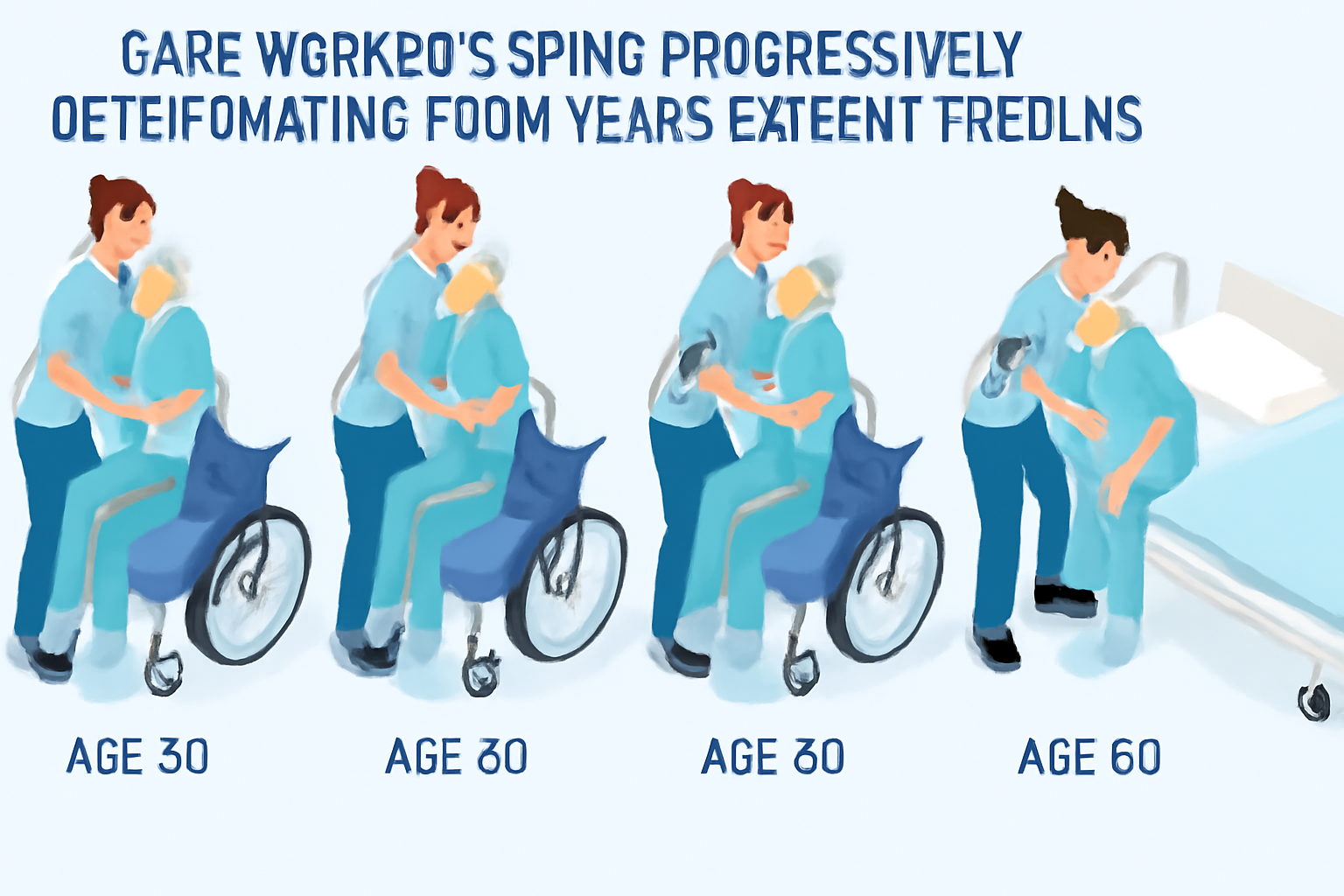
The Multifaceted Challenges of Care Workers: Lifting Patients and Back Injuries
Care workers, whether in hospitals, nursing homes, or in-home care settings, frequently face the physical demands of assisting patients with mobility issues. Among these, patient lifting is one of the most challenging aspects, posing significant risks to care workers, particularly in terms of back injuries.
Prevalence of Back Injuries
Back injuries are a leading cause of occupational health issues among care workers. According to the Bureau of Labor Statistics, nursing assistants, for instance, have one of the highest rates of musculoskeletal injuries, often attributed to the manual lifting and repositioning of patients. This challenge is compounded by factors such as inadequate staff-to-patient ratios, time pressures, and lack of proper lifting equipment.
Factors Contributing to Back Injuries
Repetitive Movements: Care workers are often required to perform repetitive lifting actions, which increase the risk of overuse injuries. The cumulative effect of lifting throughout a single shift can significantly wear on the back muscles and spine.
Improper Lifting Techniques: Without proper training, care workers may use improper lifting techniques, which adds stress to the back. Using only the back instead of integrating the legs and core muscles can lead to strains and sprains.
Inadequate Equipment: Many facilities lack adequate lifting aids such as hoists or mechanical lift systems. This forces care workers to rely on manual lifting, increasing injury risks.
Patient Factors: Variability among patients, such as unexpected movements or the inability to assist during transfers, can complicate the lifting process, leading to awkward positions and added strain on workers.
Work Environment: Cramped or cluttered spaces can make lifting and moving patients safely more difficult, contributing to improper lifting postures.
Consequences of Back Injuries
For care workers, a back injury can be a significant career disruptor. Here are some potential ramifications:
Long-Term Health Issues: Chronic back pain can develop, leading to long-term health complications that affect quality of life and ability to work.
Career Limitations: Physical injuries might restrict workers' ability to perform the full range of necessary duties, potentially hindering career advancement or leading to a premature career change.
Financial Impact: Time taken off work due to injury leads to lost wages. In extreme cases, workers may incur medical costs that are not fully covered by insurance.
Strategies for Prevention
Education and Training: Regular training on safe patient handling and ergonomics can empower care workers to minimize injury risks effectively.
Use of Assistive Devices: Encouraging the use of mechanical lifts and transfer devices can significantly reduce physical strain on care workers.
Staffing Levels: Adequate staffing can reduce the workload on individual caregivers, reducing the frequency and intensity of lifting tasks.
Healthy Work Environment: Implementing policies that prioritize safety in workspaces, such as decluttering and organizing patient rooms for optimal access.
Regular Physical Fitness: Encouraging care workers to maintain good physical fitness through exercises that strengthen core muscles can help improve lifting stamina and technique.
In conclusion, addressing the risk of back injuries among care workers is crucial not only for their health and well-being but also for maintaining a capable and effective workforce. By focusing on prevention strategies and fostering a supportive work environment, the care work industry can mitigate these challenges and sustain its workforce.